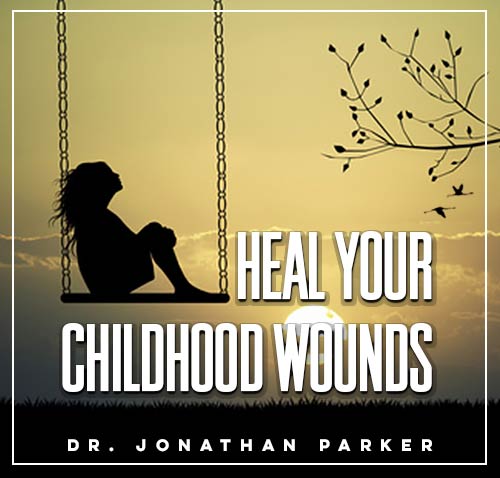Emotional Healing Journey: Transform Childhood Trauma

Before diving in, please note: This post is for informational purposes only. If you’d like to know more about how we approach topics, feel free to check out our friendly Disclaimer Page.
Hey there, amazing readers! 🖐️ Just a quick note: yes, we know there are a lot of ads here. Trust us, we get it—it’s not the prettiest look, but they help us keep this blog alive and kicking. Those pesky little ads cover the costs of all the behind-the-scenes magic, from hosting and tech stuff to creating content we hope you’ll love.
We’re committed to delivering quality posts, and your support (even just sticking around despite the ads) means everything to us. So, bear with us, and thanks for helping us keep the good vibes rolling. Now, on to the fun stuff! 😉
TRANSLATE BUTTON AT THE END OF THE ARTICLE
A Quick Overview
Childhood trauma can have a profound impact on one’s mental health and overall well-being.
It can manifest in various ways, often leading to long-lasting emotional wounds that affect relationships, self-esteem, and daily functioning.
Recognizing the signs of unresolved trauma is the first step towards healing and moving forward in life.
In this article, we will explore the importance of emotional healing, steps towards healing childhood trauma, seeking professional help, building a support system, practicing self-compassion, techniques for emotional release, mindfulness and meditation for healing, cultivating resilience and strength, and celebrating progress and growth.
Understanding Childhood Trauma
Childhood trauma refers to any distressing or disturbing event that occurs during childhood.
This can include physical, emotional, or sexual abuse, neglect, witnessing violence, or experiencing a traumatic loss.
Such experiences can have a lasting impact on a person’s mental and emotional well-being, shaping their beliefs, behaviors, and relationships in adulthood.
Childhood trauma can disrupt a child’s sense of safety and security, leading to feelings of fear, helplessness, and vulnerability that can persist into adulthood.
Impact of Childhood Trauma on Mental Health
The impact of childhood trauma on mental health can be significant and varied.
Individuals who have experienced childhood trauma may be at higher risk for developing mental health disorders such as depression, anxiety, post-traumatic stress disorder (PTSD), and substance abuse.
They may also struggle with issues related to self-esteem, trust, and intimacy, as well as difficulty regulating emotions and coping with stress.
Childhood trauma can shape the way a person views themselves and the world around them, leading to negative self-beliefs and patterns of behavior that can be difficult to break.
Recognizing Signs of Unresolved Trauma
It is essential to recognize the signs of unresolved childhood trauma in order to begin the healing process.
Some common signs of unresolved trauma include:
Persistent feelings of fear, anxiety, or depression
Flashbacks or intrusive memories of traumatic events
Avoidance of certain people, places, or activities
Difficulty trusting others or forming close relationships
Self-destructive behaviors such as substance abuse or self-harm
Chronic physical symptoms such as headaches or stomach issues
Difficulty regulating emotions or managing stress
If you identify with any of these signs, it may be a sign that you are still carrying the emotional wounds of childhood trauma.
Importance of Emotional Healing
Emotional healing is crucial for individuals who have experienced childhood trauma.
By addressing and processing unresolved emotions, thoughts, and beliefs related to past traumatic experiences, individuals can begin to heal and move forward in their lives.
Emotional healing involves acknowledging the pain and suffering caused by childhood trauma, validating one’s emotions, and learning to cope with and manage difficult feelings in a healthy way.
It allows individuals to release pent-up emotions, develop self-compassion, and cultivate resilience in the face of adversity.
Steps Towards Healing Childhood Trauma
Healing childhood trauma is a gradual process that requires time, patience, and self-compassion.
Some steps towards healing childhood trauma include:
Acknowledge and validate your emotions and experiences.
Seek therapy or counseling to process and work through past traumas.
Practice self-care and self-compassion.
Discover "SUPERFOODS: The Key to Health and Balance🥗" 🌿🌺
Engage in activities that bring you joy and relaxation.
Connect with supportive friends, family members, or support groups.
Learn healthy coping strategies for managing stress and emotions.
Practice mindfulness and meditation to cultivate inner peace and awareness.
Set boundaries with toxic relationships or environments.
Challenge negative self-beliefs and replace them with positive affirmations.
Celebrate small victories and milestones in your healing journey.
Seeking Professional Help
Seeking professional help is essential for individuals who have experienced childhood trauma and are struggling to cope with its effects.
A licensed therapist or counselor can provide a safe and supportive environment for you to process and work through past traumas, develop healthy coping strategies, and learn skills for managing emotions and stress.
Therapy can help you explore and address the root causes of your emotional pain, gain insight into your patterns of behavior and beliefs, and develop a sense of empowerment and resilience in the face of adversity.
Building a Support System
Building a strong support system is critical for individuals healing from childhood trauma.
Surrounding yourself with supportive friends, family members, or support groups can provide you with a sense of belonging, understanding, and validation.
A strong support system can offer you empathy, encouragement, and practical assistance in times of need.
It can also help you feel less isolated and alone in your healing journey, knowing that you have caring and compassionate individuals who are there for you unconditionally.
Practicing Self-Compassion
Practicing self-compassion is a vital component of healing from childhood trauma.
Self-compassion involves treating yourself with kindness, understanding, and acceptance, especially in moments of pain, suffering, and self-doubt.
It means acknowledging your worth and inherent goodness, despite the challenges and hardships you have faced.
By practicing self-compassion, you can learn to be gentle and forgiving towards yourself, let go of self-criticism and perfectionism, and embrace your vulnerabilities and imperfections with love and compassion.
Techniques for Emotional Release
There are various techniques for emotional release that can help individuals heal from childhood trauma.
Some effective techniques include:
Journaling: Writing about your thoughts, feelings, and experiences can help you process and release pent-up emotions.
Art therapy: Engaging in creative activities such as painting, drawing, or sculpting can provide a therapeutic outlet for expressing emotions.
Physical exercise: Engaging in physical activity such as yoga, running, or dancing can help release stored tension and stress in the body.
Deep breathing exercises: Practicing deep breathing techniques can help calm the nervous system and promote relaxation.
Progressive muscle relaxation: Tensing and releasing different muscle groups in the body can help release physical tension and stress.
By incorporating these techniques into your daily routine, you can begin to release and heal from the emotional wounds of childhood trauma.
Mindfulness and Meditation for Healing
Mindfulness and meditation are powerful tools for healing from childhood trauma.
Mindfulness involves being present in the moment, observing your thoughts and emotions without judgment, and cultivating a sense of inner peace and awareness.
Meditation involves quieting the mind, focusing on your breath or a mantra, and allowing yourself to let go of negative thoughts and emotions.
By practicing mindfulness and meditation regularly, you can learn to regulate your emotions, reduce stress and anxiety, and cultivate a sense of calm and balance in your life.
Cultivating Resilience and Strength
Cultivating resilience and strength is essential for individuals healing from childhood trauma.
Resilience involves the ability to bounce back from adversity, overcome challenges, and adapt to difficult circumstances with grace and courage.
By developing resilience, you can learn to face your past traumas with strength and determination, rather than being overwhelmed by them.
Strength involves recognizing your inner resources, skills, and qualities that have helped you survive and thrive in the face of adversity.
By cultivating resilience and strength, you can navigate the healing journey with confidence and resilience.
Discover "Sports Nutrition: The Importance of Nutrition and Exercise for Overall Health 🥗🏋️"
Celebrating Progress and Growth
It is important to celebrate progress and growth in your healing journey from childhood trauma.
Recognizing and acknowledging the small victories, milestones, and achievements along the way can help you stay motivated, inspired, and hopeful for the future.
Celebrating progress can include:
Reflecting on how far you have come in your healing journey.
Acknowledging your courage, resilience, and strength in facing past traumas.
Celebrating moments of self-compassion, self-care, and self-love.
Recognizing the positive changes and improvements in your mental health and well-being.
Expressing gratitude for the support, love, and understanding of others on your healing journey.
By celebrating progress and growth, you can affirm your resilience, determination, and commitment to healing from childhood trauma.
Conclusion
Healing from childhood trauma is a transformative and empowering journey that requires courage, patience, and self-compassion.
By understanding the impact of childhood trauma on mental health, recognizing signs of unresolved trauma, and taking steps towards emotional healing, individuals can begin to heal and move forward in their lives.
Seeking professional help, building a support system, practicing self-compassion, using techniques for emotional release, and engaging in mindfulness and meditation can all contribute to the healing process.
By cultivating resilience and strength, celebrating progress and growth, individuals can reclaim their sense of self-worth, empowerment, and wholeness after experiencing childhood trauma.
Remember, healing is possible, and you deserve to live a life free from the burdens of the past.

The Enlightenment Journey is a remarkable collection of writings authored by a distinguished group of experts in the fields of spirituality, new age, and esoteric knowledge.
This anthology features a diverse assembly of well-experienced authors who bring their profound insights and credible perspectives to the forefront.
Each contributor possesses a wealth of knowledge and wisdom, making them authorities in their respective domains.
Together, they offer readers a transformative journey into the realms of spiritual growth, self-discovery, and esoteric enlightenment.
The Enlightenment Journey is a testament to the collective expertise of these luminaries, providing readers with a rich tapestry of ideas and information to illuminate their spiritual path.
Our Diverse Expertise 🌟
While our primary focus is on spirituality and esotericism, we are equally passionate about exploring a wide range of other topics and niches 🌍📚. Our experienced team is dedicated to delivering high-quality, informative content across various subjects ✨.
To ensure we provide the most accurate and valuable insights, we collaborate with trusted experts in their respective domains 🧑🏫👩🏫. This allows us to offer well-rounded perspectives and knowledge to our readers.
Our blog originally focused on spirituality and metaphysics, but we’ve since expanded to cover a wide range of niches. Don’t worry—we continue to publish a lot of articles on spirituality! Frequently visit our blog to explore our diverse content and stay tuned for more insightful reads.







